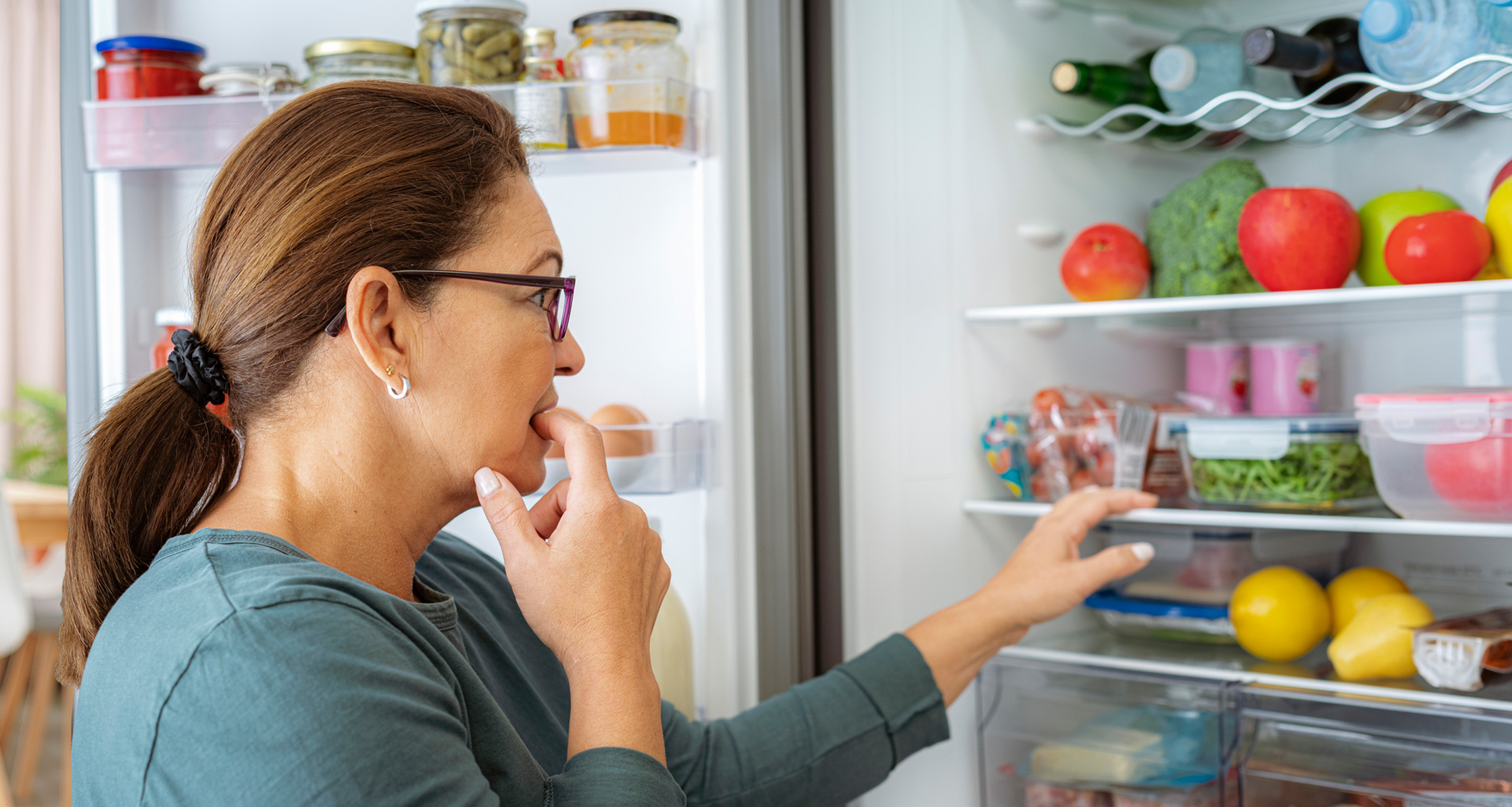Because people typically crave energy-dense foods high in sugar, salt or fat, giving in to our cravings too often can derail our health and wellness goals.
It’s a real thing. We’ve all had them – a craving for a certain food, like a sweet chocolate dessert or a big bag of our favorite potato chips. Food cravings, a desire to eat food when the body is not hungry, is linked to a pleasure response. Researchers found that food cravings can happen spontaneously or in response to food cues, which are affected by hormones, such as an increase in cravings during stress, pregnancy, and the second half of the menstrual cycle. Highly processed foods (HPF), containing ingredients such as monosodium glutamate (MSG), cause addictive behavior and food cravings. Whatever the cause, giving in cravings too often can derail our health and wellness goals.
Whether cravings lead to fast food after a stressful day at work or to indulge in sweet treats watching your favorite show, simple changes can help manage your food cravings and stay on track.
Tips to Manage Your Food Cravings
- Don’t deprive yourself. Studies show that depriving yourself of a particular food can increase cravings for that food. It can lead to binge eating or guilt associated with that food. Instead, try healthier, smaller ways to indulge. For example, if you have a sweet tooth, try these berry pudding parfaits or this chocolate chip chickpea cookie dough instead of a candy bar or bowl of ice cream. It’s important to note, however, that the same studies show that restriction over at least several weeks can result in reduced food cravings.
- Are you actually hungry? When a craving hits, ask yourself if you’re actually hungry? If your stomach growls or has been a few hours since you’ve eaten, you probably are. But we eat for many other reasons besides hunger. Maybe you’re stressed or sad and seek comfort. Maybe you’re at a party near a table of food. Try to identify if it’s a craving or actual hunger before you eat.
- Get enough of the right nutrients. Eating protein and fiber throughout the day can help limit cravings by stabilizing your blood sugar levels and keeping your stomach full longer. Try starting your day with whole grain cereal or oatmeal topped with berries, or a vegetable-packed omelet. Have high-protein snacks ready for that afternoon slump and learn about foods that give you the fiber you need to control cravings.

- Plan ahead. Cravings often occur in the late afternoon and evening. If you have a hectic schedule or forget to eat early in the day, you’re more likely to want foods high in fat or sugar to get your blood sugar or energy up quickly. Try planning your meals and snacks (maybe on Sunday before your week begins) and make healthier foods available.
- Distract yourself. If you have a craving for something you know isn’t healthy, try distracting yourself before giving in. You could take a walk, call a friend or watch some TV. Separating yourself from a craving could give you enough time for the craving to subside.
- Eat mindfully. Mindful eating is a way to think more consciously about eating. It involves using all of your physical and emotional senses to experience and enjoy your food choices. To get started, try eating slowly, chew more, pause in between bites, and think about the food you’re putting into your body. By slowing down and becoming aware of our eating habits we may eat less and choose healthier foods.
- Get enough sleep. When you’re tired, you may crave sugar or calories to keep your energy levels up. Sleep loss interferes with a hunger-suppressing hormone and has been linked to obesity, type 2 diabetes, heart disease, and more. Experts recommend adults get between 7-9 hours of sleep each night.
- Drink enough water. Thirst is often mistaken for hunger. Try drinking a glass of water before caving to a food craving to see if it helps. Staying hydrated can help curb your appetite and may boost your metabolism, too.
- Manage your stress levels. Feeling stressed may result in emotional eating and craving for foods high in fat, sugar or salt. To better control cravings, try to manage your stress. Learn more about techniques such as mindfulness and meditation, yoga, or exercise to help your ability to deal with stress.
- Switch things up. Studies show that certain cues can trigger our cravings. For example, you may find that watching commercials makes you crave unhealthy foods. Or maybe you associate watching TV with eating a bag of chips. Maybe your cravings come after a bad night’s sleep. Pay attention to what leads to your cravings and try to change your routine.
- Reach out for support. If you’re having a hard time managing your food cravings or food choices, contact the Department of Veterans Affairs (VA) Nutrition and Food Services for support.
- VA has registered dietician nutritionists who can review your personal eating habits and create a personalized nutrition plan.
- VA’s Healthy Teaching Kitchen program offers cooking classes – both in person and online – that can provide simple, tasty recipes to create at home.
- VA provides cookbooks and recipes to help you find new, healthy ideas to curb your cravings.
Don’t let your food cravings derail your health and wellness goals. Instead, follow the tips above to help manage and control them.







